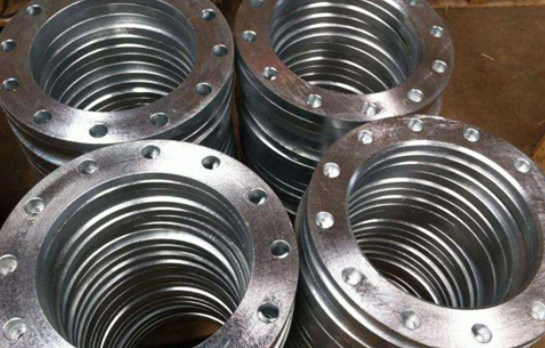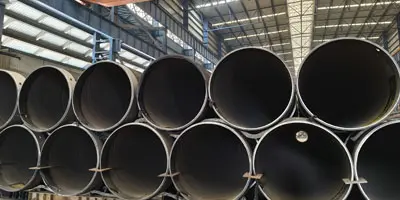Galvanized pipe fittings are key components in building and industrial piping systems, especially in application scenarios that require corrosion protection and high durability. Galvanized pipe fittings are widely used in residential, commercial and industrial fields with their excellent corrosion resistance, mechanical strength and affordability, and have become an indispensable connection element in many piping systems.
What are galvanized pipe fittings?
Galvanized pipe fittings are pipe fittings made of iron or steel treated by hot-dip galvanizing, mainly used to connect galvanized iron pipes. The hot-dip galvanizing process involves immersing the pipe fittings in a molten zinc bath to form a metallurgical bond between the zinc and the substrate, thereby forming a strong protective coating on its surface. This coating can not only effectively prevent the pipe fittings from rusting and corrosion, but also significantly extend their service life.
Common types of galvanized pipe fittings
There are many types of galvanized pipe fittings, each suitable for different pipe connection needs. According to their shape and function in the piping system, common galvanized pipe fittings include elbows, tees, crosses, reducers and socket fittings.
1. Elbows
Elbows are one of the most common pipe fittings, mainly used to change the direction of fluid flow in pipes. Depending on the angle, elbows can be divided into 45-degree and 90-degree elbows. 45-degree elbows are suitable for more gentle changes in direction, while 90-degree elbows are used for right-angle turns. In addition, there is a special right-angle elbow that is not directly connected to the pipe, but to other galvanized pipe fittings, which is used to achieve complex turns in the pipe system.
2. Tees and Crosses
Tees and Crosses have three and four ports respectively, and are mainly used for branching or converging pipes. In complex pipe systems, tees and crosses can effectively guide fluids into different pipe branches, thereby achieving the distribution of fluids in multiple directions. These pipe fittings are very common in water supply, drainage, and industrial liquid transportation, especially in situations where multi-path flow is required.
3. Reducers
Reducers are used to connect pipes of different diameters and are essential conversion parts in pipe systems.
Reducers can easily achieve transitions between different pipe diameters in pipe systems, thereby ensuring smooth flow of fluids. This type of fitting plays a key role in applications where pipe sizes need to be changed, such as in water pressure regulation or flow control.
4. Socket-and-spigot fittings
Socket-and-spigot fittings are generally used in pipe systems that need to withstand higher pressures. The design of this fitting ensures the tightness and durability of the pipe connection, and is suitable for liquid transportation, gas transportation and other applications that require high-strength connections. Socket-and-spigot fittings are easy to install and have a strong connection, making them ideal for use in heavy-duty pipe systems.
5. Galvanized flange
Galvanized flanges are generally carbon steel flanges. Carbon steel flanges are low in cost, but far less corrosion-resistant than stainless steel, alloy steel and other flanges. In order to achieve corrosion resistance, extend its service life and save costs, galvanizing is usually used.

Application advantages of galvanized pipe fittings
Galvanized pipe fittings are widely used in various types of pipe systems due to their versatility and durability. The following are the main advantages of galvanized pipe fittings in practical applications:
1. Corrosion resistance
The zinc coating of galvanized pipe fittings can provide long-term corrosion protection, especially for the transportation of water, gas and other liquids. The zinc coating can effectively resist moisture, oxygen and other corrosive elements in the environment, thereby extending the service life of the pipe system.
2. Low maintenance cost
The maintenance cost of galvanized pipe fittings is relatively low. Once properly installed, galvanized pipe fittings require almost no frequent maintenance, which can significantly save costs in long-term use. In contrast, plastic fittings often need to be replaced or repaired regularly, while galvanized fittings are more durable.
3. Strength and Durability
Galvanized fittings are made of strong steel and have excellent mechanical strength and durability. They are able to withstand high pressure and mechanical stress and are suitable for applications that require high-strength connections. Whether it is used for high-pressure liquid transportation or industrial piping systems, galvanized pipe fittings can guarantee their excellent performance.
4. Cost-effectiveness
The economical nature of galvanized pipe fittings is also one of the reasons for their popularity. Compared with stainless steel or brass fittings, galvanized pipe fittings provide similar performance at a much lower cost. Therefore, galvanized pipe fittings are an ideal choice for residential, commercial and industrial projects, especially when the budget is limited.
5. Wide range of uses
Galvanized pipe fittings come in a variety of sizes and types to suit a variety of plumbing application needs. From simple domestic water supply systems to complex industrial pipe networks, galvanized pipe fittings can provide reliable solutions. Its diverse shapes and configurations make galvanized pipe fittings flexible for various occasions and meet different pipe connection needs.
How to Loosen Rusted Galvanized Pipe
While galvanized pipes are generally more corrosion-resistant than black iron pipes, they are not completely rust-proof. Over time, the zinc coating on galvanized pipes can corrode, causing corrosion to the steel underneath. Perform the following steps to loosen rusted galvanized pipe:
1. Shut off the water supply to the section of pipe being worked on. Apply penetrating oil to the threaded pipe where it connects to the fitting that needs to be removed.
2. Place one pipe wrench on the lock nut and the other on the retaining nut. The lock nut is the nut closest to the fitting and is used to lock the fitting in place. The retaining nut is the nut farthest from the fitting and is used to hold the pipe in place. Turn the retaining nut counterclockwise to loosen the connection.
3. Hold the fitting steady with one of the pipe wrenches and use the other pipe wrench to turn the loose pipe connected to the fitting. Remove the galvanized pipe fitting by turning the wrench on the loose pipe counterclockwise.
4. Move the wrench on the loose pipe to the pipe on the other side of the fitting you want to remove. Turn the wrench counterclockwise again and the fitting should come off. If more force is needed, place the pipe on the wrench handle and push it down.
How to choose a galvanized pipe fittings manufacturer?
You can compare multiple manufacturers. If the demand is large, you can visit the factory to see the production mode, factory facilities and equipment, the level and professionalism of the technicians to evaluate the strength of the manufacturer. You can also check the manufacturer's product display, brand culture, user reputation and other information through online channels to get a more comprehensive understanding of the manufacturer's situation and capabilities.
Conclusion
Galvanized pipe fittings have become an indispensable and important part of the pipeline system due to their excellent corrosion resistance, strength, durability and cost-effectiveness. From household water supply to industrial liquid transportation, galvanized pipe fittings can provide reliable connection solutions. Understanding the types, applications and advantages of galvanized pipe fittings in actual use can help users make more informed decisions when selecting and using galvanized pipe fittings. Through regular maintenance and proper use,
galvanized pipe fittings will play a long and reliable role in various environments.






 English
English Español
Español بالعربية
بالعربية











 Phone :
Phone :  Whatsapp :
Whatsapp :  Email :
Email : 


